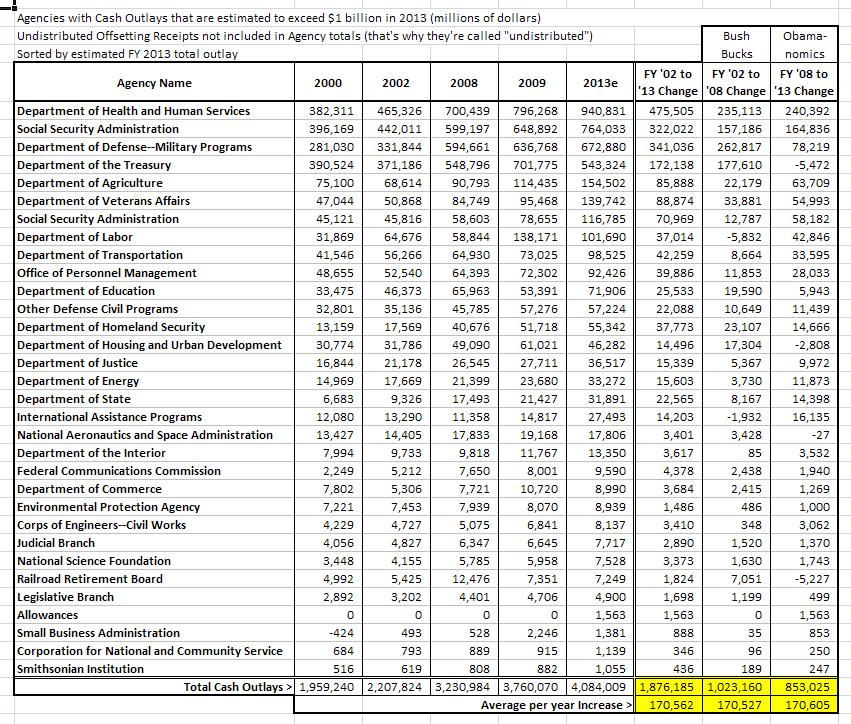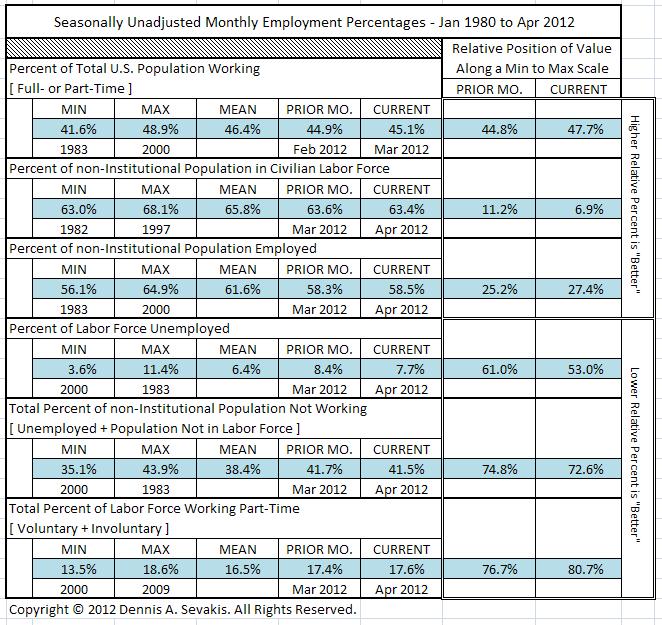The following is an upgraded version of an email sent to my B-school buddy Harry. . .
I suppose you’ll be dismayed at the length of my response to your “question” of a week or so back, but if you bear with me I do believe I can make a good case for my contention that the recent 2008 financial crisis and the concomitant economic malaise were neither unanticipated nor unintentional. My opinion of the issue is based on widely- and not-so-widely-reported events and the activities of key players. When put together, I find it rather improbable that the whole mess just “happened.” I’ll start with one after-the-fact statement made by Mr. Lloyd Blankfein, Goldman Sachs CEO, while testifying before Congress on Goldman’s role in the crisis:
New York Times
Bankers Without a Clue
By PAUL KRUGMAN
Published: January 14, 2010
Still, Mr. Dimon’s cluelessness paled beside that of Goldman Sachs’s Lloyd Blankfein, who compared the financial crisis to a hurricane nobody could have predicted. Phil Angelides, the commission’s chairman, was not amused: The financial crisis, he declared, wasn’t an act of God; it resulted from “acts of men and women.”
But Goldman and others certainly knew it would be BIG. Here are a few specific references on that subject:
NewsMax
Economist: Housing Bubble ‘Biggest in History’
MoneyNews
Monday, June 27, 2005
The current worldwide boom in residential real estate prices is “the biggest bubble in history,” according to a disturbing new report in the Economist magazine.
Never before have home prices risen so fast, for so long, in so many countries including the United States, reveals a front-page story in the world’s most respected financial periodical.
“Rising property prices helped to prop up the world economy after the stock market bubble burst in 2000,” The Economist reports. “What if the housing boom now turns to bust?
Business Week
Goldman Sachs Economist on the Bubble
Posted by: Peter Coy on September 23, 2005
Just got off the phone with Jan Hatzius, a Goldman Sachs economist who has written extensively on the housing market. He gave me permission to post a research note that he wrote today about the same academic study that I questioned in a post yesterday.
Hatzius says he’s not sure I’m correct that the authors of the study assumed their conclusion. His criticisms are different. The biggest one is that the authors ended their analysis too soon—last year—missing the further inflation of housing prices since then. Here’s what he wrote:
Bubble Trouble? Probably Yes. . .
FOX News
Housing Bubble: Fact or Fiction?
Written By Paul B. Farrell
Published March 14, 2006
MarketWatch
Back during the ’70s recession I was a real estate expert with Morgan Stanley. We helped banks and REITs work out billions of loser portfolios, reorganize, file bankruptcy, even advised the U.S. Dept of Housing & Urban Development on the collapsed Federal New Towns program. I’ve worked for developers and mortgage bankers, got degrees in architecture and city planning, taught commercial real estate at Cornell University.
But oddly, like the rest of America, most of the time I don’t think about the housing bubble that’s about to pop. We ignore the coming storm.
But when it gets up close and personal — like my family’s home — well, suddenly I’m shocked out of my denial.
The shocker? I just learned we live in a metro area that could see a devastating 55.8% decline in home prices in the next five years. Worse yet, most of the real estate north and south of us — from San Francisco to San Diego — is predicted to decline 50% in the next five years. Ouch!
That dire prediction was made by former Goldman Sachs investment banker John Talbott in his new book, “Sell Now! The End of the Housing Bubble.”
A Goldman-Paulson Primer
Paulson was the first CEO (1998-2006) of Goldman Sachs when it was recapitalized as a stock company rather than a partnership. That meant that they now got to bet with other people’s money rather than just their own. As Goldman CEO, Paulson made 70 trips to China. Guess which side of the Pacific his bread is buttered on?
American Economic Alert
The “Goldman Sachs Effect” Transfers the Strategic Advantage to China
William R. Hawkins
Thursday, September 28, 2006
Yet, last May, while Paulson was still Goldman Sachs CEO, the firm invested $2.6 billion in the Industrial & Commercial Bank of China, the country’s largest bank. It is the largest single investment Goldman Sachs has ever made. According to a Sept. 28 report in the Wall Street Journal, “when ICBC, as the bank is known, lists its shares on the Hong Kong and Shanghai stock markets next month, the value of Goldman’s stake could double based on current demand for the offering.” So much for “fragile” Chinese banks!
Goldman was the primary moving force behind the creation of the December 2000 Republican sponsored “Commodity Futures Modernization Act.” This legislation was signed into law by Clinton and created “weapons of mass financial destruction” by turning debt markets into a global craps table that was exempted from any and all federal and state gaming and “bucket shop” laws (with some minor exceptions). Here are the last two sections of the 262 pages of legislation:
PAGE 261
1 SEC. 407. EXCLUSION OF COVERED SWAP AGREEMENTS.
2 No provision of the Commodity Exchange Act (other
3 than section 5b of such Act with respect to the clearing
4 of covered swap agreements) shall apply to, and the Com-
5 modity Futures Trading Commission shall not exercise
6 regulatory authority with respect to, a covered swap agree-
7 ment offered, entered into, or provided by a bank.
8 SEC. 408. CONTRACT ENFORCEMENT.
9 (a) HYBRID INSTRUMENTS.– No hybrid instrument
10 shall be void, voidable, or unenforceable, and no party to
11 a hybrid instrument shall be entitled to rescind, or recover
12 any payment made with respect to, a hybrid instrument
13 under any provision of Federal or State law, based solely
14 on the failure of the hybrid instrument to satisfy the pre-
15 dominance test set forth in section 405(b) of this Act or
16 to comply with the terms or conditions of an exemption
17 or exclusion from any provision of the Commodity Ex-
18 change Act or any regulation of the Commodity Futures
19 Trading Commission.
20 (b) COVERED SWAP AGREEMENTS. — No covered
21 swap agreement shall be void, voidable, or unenforceable,
22 and no party to a covered swap agreement shall be entitled
23 to rescind, or recover any payment made with respect to,
24 a covered swap agreement under any provision of Federal
25 or State law, based solely on the failure of the covered
26 swap agreement to comply with the terms or conditions
PAGE 262
1 of an exemption or exclusion from any provision of the
2 Commodity Exchange Act or any regulation of the Com-
3 modity Futures Trading Commission.
4 (c) PREEMPTION. — This title shall supersede and pre-
5 empt the application of any State or local law that pro-
6 hibits or regulates gaming or the operation of bucket
7 shops (other than antifraud provisions of general applica-
8 bility) in the case of —
9 (1) a hybrid instrument that is predominantly
10 a banking product; or
11 (2) a covered swap agreement.
(Have to pass the bill to know what’s in it, right?)
This makes it rather difficult to describe derivatives trading as anything other than gambling. Otherwise, why the specific exemptions from nearly all regulation? “…other than antifraud provisions of general applicability” of course.
In September of 2005 a Goldman Sachs economist wrote a response contradicting a rather sanguine view of the “Housing Bubble” (see above) that was expressed in a WSJ article by two academic economists. His view was “Thus, housing valuations are stretched, and are becoming more stretched the longer the current boom continues.”
In 2005 Federal Bankruptcy law was amended so as to put the holders of derivatives (Credit Default Swaps, etc.) at the head of the feeding frenzy when a company goes belly up. They get theirs before anyone else because the new law exempted derivative settlement funds from the usual bankruptcy freeze.
Goldman Sachs was already divesting itself of real estate bets in late 2006 after having been given that in-house heads-up the year before.
The Goldman Exception
Goldman Sachs Chief Executive Lloyd Blankfein this year will almost certainly earn more than the $54.3 million he made in 2006, the New York Times reports. And “if he gets a 20% raise — in line with the growth of Goldman’s compensation pool– he will take home at least $65 million. Some expect his pay, which is directly tied to the firm’s performance, to climb as high as $75 million,” the Times says. The reason his career is going in the opposite direction of Chuck Prince’s or Stan O’Neal’s is that Goldman, unlike almost all its peers on Wall Street, decided late last year to cut its exposure against “mortgage risk” and even take out expensive insurance against the risk that remained (probably the AIG swaps), the Times adds.
— WSJ, Morning Brief, November 19, 2007 — 7:25 a.m. EST
Treasury and the Fed let Lehman Bros. tank in September of ’08 but saved AIG. Why? Well, AIG was counterparty to CDS bets made by Goldman. Using TARP money that was being shoveled into the teetering insurance giant, AIG assumed ownership of the securitized debt owned by Goldman by paying off the credit default swaps at face value. This was done despite the fact that the debt had not actually become worthless. As a result, Goldman didn’t end up owing the government additional tarp dollars but AIG did.
So, by the end of 2007, nearly a year prior to the meltdown of the financial markets, Goldman pretty much had their ducks lined up, ready and waiting for the bubble to pop. And since the middle of 2006, they also had their former CEO Hank Paulson seated in the cat bird seat as the Treasury Secretary. As soon as he arrived at Treasury he went to work preparing for the crisis on the horizon:
March 30, 2009
The Financial Crisis: An Inside View
PHILLIP SWAGEL
Assistant Secretary for Economic Policy from December 2006
to the end of the Bush administration on January 20, 2009.
(Starting near the bottom of Page 3. . .)
On the Verge of Crisis
Secretary Paulson on his arrival in summer 2006 told Treasury staff that it was time to prepare for a financial system challenge. As he put it, credit market conditions had been so easy for so long that many market participants were not prepared for a financial shock with systemic implications. His frame of reference was the market dislocations that had taken place in 1998 with the Russia and LTCM crises.
From summer 2006, Treasury staff had worked to identify potential financial market challenges and possible policy approaches, both near term and over the horizon. The longer-range policy discussions eventually turned into the March 2008 Treasury Blueprint for Financial Markets Regulatory Reform that provided a high-level approach to financial markets reform. Consideration of near-term situations included sudden crises such as terror attacks, natural disasters, or massive power blackouts; market-driven events such as the failure of a major financial institution, a large sovereign government default, or huge losses at hedge funds; or slower-moving macroeconomic developments such as energy price shocks, a prolonged economic downturn that sparked wholesale corporate bankruptcies, or a large and disorderly movement in the exchange value of the dollar that led to financial market difficulties. None of these were seen as imminent in mid-to-late 2006, and particularly not with the magnitude that would eventually occur in terms of the impact on output and employment.
Rather than trying to prepare plans for particular scenarios, the focus at Treasury was on risk mitigation beforehand and on preparing broad responses in the event that a crisis developed, while recognizing that the details would vary with the situation. To help ensure smooth teamwork in the event of a problem, Secretary Paulson reinvigorated the President’s Working Group on Financial Markets (PWG) that had been formed after the October 1987 stock market crash. The PWG brought together senior officials from the Treasury, Fed, SEC, and CFTC to discuss financial and economic developments and potential problems. Regular meetings took place of the heads of the agencies, with frequent and routine interaction at the staff level. Secretary Paulson also talked regularly about the need for financial institutions to prepare for an end to abnormally loose financial conditions.
So it turns out that Goldman and honchos Paulson and Blankfein had been preparing for a “shock” to the system for quite some time and, even if the magnitude turned out to be a bit of a surprise, they well knew what was on its way. The question then becomes, did no one else in the Bush Administration or the loyal Democratic opposition have any idea as to what was about to transpire? If they did, why wasn’t something done sooner so as to reduce the impact on the economy and financial system? 2008 was an election year, obviously, and we always have to have an October — in this case September — surprise. Bear Stearns was saved in February. That was too early for a meltdown. But September was close enough to the election. When Lehman Bros. offered itself up for sacrifice the trigger was pulled and the rest is history. I’m not willing to believe that Goldman had little notion of what was transpiring at the other investment banks. And if they did know, it seems unlikely the actions of Paulson and Blankfein were merely reactionary.
Don’t get me wrong. Goldman was not the cause of all this. They may have behaved unethically but I don’t believe illegally. After all, they wrote the laws so why break them? Derivatives, including credit default swaps, are traded over-the-counter. No exchange. So who has what bets placed with whom is known only to the counterparties themselves. Very convenient when one wishes to conceal which way one is betting.
The major factors behind all this nonsense were not the creation of Goldman. Our trade and fiscal policies were the responsibility of the Administration while monetary that of the Federal Reserve. Legislation such as the Community Reinvestment Act pushed for increased home ownership as did the pressure put upon banks to loosen home loan requirements for minorities. Fannie Mae and Freddie Mac were being operated fraudulently. And then there was the issue of “Liar Loans” as Steve G. (another B-school sectionmate) expounded upon. These led to rampant speculation in the housing market by people who had no business doing so. Everyone wanted to get in on the act. How bad did it get? This will give you some idea:
The End
by Michael Lewis
From the December 2008 issue of Portfolio
The era that defined Wall Street is finally, officially over. Michael Lewis, who chronicled its excess in Liar’s Poker, returns to his old haunt to figure out what went wrong. . .
More generally, the subprime market tapped a tranche of the American public that did not typically have anything to do with Wall Street. Lenders were making loans to people who, based on their credit ratings, were less creditworthy than 71 percent of the population. Eisman knew some of these people. One day, his housekeeper, a South American woman, told him that she was planning to buy a townhouse in Queens. “The price was absurd, and they were giving her a low-down-payment option-ARM,” says Eisman, who talked her into taking out a conventional fixed-rate mortgage. Next, the baby nurse he’d hired back in 1997 to take care of his newborn twin daughters phoned him. “She was this lovely woman from Jamaica,” he says. “One day she calls me and says she and her sister own five townhouses in Queens. I said, ‘How did that happen?’?” It happened because after they bought the first one and its value rose, the lenders came and suggested they refinance and take out $250,000, which they used to buy another one. Then the price of that one rose too, and they repeated the experiment. “By the time they were done,” Eisman says, “they owned five of them, the market was falling, and they couldn’t make any of the payments.”
It really was a giant game of liars poker invented and promoted by our government to serve its own deceptive purpose of creating — and sustaining for however long a period it could — a smoke and mirrors prosperity. Goldman helped construct the plan and managed it, but didn’t own it. They just did the job as best they could for their own benefit and that of the Chinese and U.S. Governments as well as the Saudis and others. Goldman, in the persons of Paulson & Blankfein, controlled the timing because its hand was on the wheel. If you’re not in that position, you’re just going along for the ride — whether it’s off the cliff or otherwise.
Or so it must seem to the taxpayer.
Ciao,
Dennis



